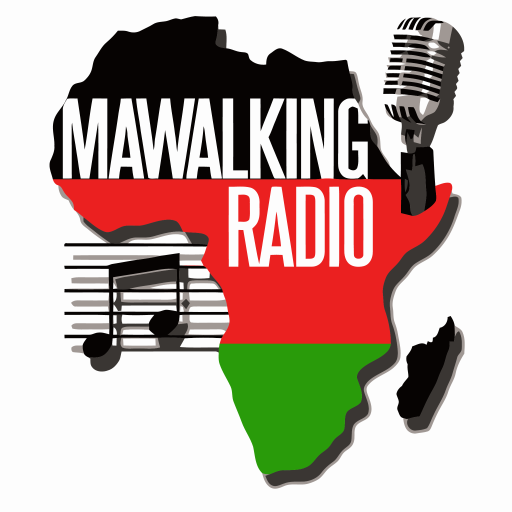
Exploring the Vibrant Legacy of Zaïko Langa Langa
In the heart of Kinsasha, amidst the bustling streets and vibrant culture of the Democratic Republic of Congo, a musical revolution was born in 1969. It came in the form of Zaïko Langa Langa, a Congolese Soukous band that would go on to reshape the landscape of African Music, leaving an indelible mark on generations to come.
Formation and Early Years
The genesis of Zaïko Langa Langa can be traced back to the dissolution of another band, Bel Guide National, in December 1969. D.V. Moanda, Henri Mongombe, Marcellin Delo, and André Bita came together with a vision to create something new and innovative. They were soon joined by talented musicians like Papa Wemba, Jossart N’Yoka Longo, and Manuaku Waku, among others.
Evolution through Lineup Changes
One of the defining characteristics of Zaiko Langa Langa is its ever-evolving lineup. This fluidity has allowed the band to adapt and experiment, contributing to its rich and diverse musical evolution. Despite changes in personnel, Zaiko Langa Langa has maintained its commitment to producing high-energy, danceable music that transcends cultural boundaries.
Key Figures in Zaiko Langa Langa’s Journey
Several key figures have played vital roles in shaping Zaiko Langa Langa’s sound and impact:
Nyboma Mwan’dido: A distinctive vocalist and songwriter, Nyboma’s contributions have been central to the band’s success.
Evoloko Lay Lay: Renowned for his charismatic stage presence, Evoloko Lay Lay left an enduring mark on Zaiko Langa Langa during his tenure with the band.
Bimi Ombale: The talented guitarist has been instrumental in shaping the band’s unique sound with his intricate guitar work.
Bozi Boziana: An influential singer and songwriter, Bozi Boziana has significantly contributed to Zaiko Langa Langa’s musical repertoire.
Dindo Yogo: With his unique voice, Dindo Yogo added another layer to Zaiko Langa Langa’s dynamic sound during his time with the band.
Innovation and Influence
From the outset, Zaïko Langa Langa set out to break conventions and redefine Congolese Music. They pioneered a new sound by removing the traditional brass sections, opting instead for vocal “cri(s)” and introducing the iconic snare and hi-hat rhythm known as Cavacha. This innovative approach, coupled with their electrifying performances, catapulted them to the forefront of the music scene.
Rise to Prominence
Throughout the 1970s and 1980s, Zaïko Langa Langa’s star continued to rise. They released a string of hit singles and albums, earning accolades and awards along the way. Their electrifying live performances captivated audiences across Africa and beyond, cementing their reputation as one of the continent’s most dynamic musical acts.
Challenges and Resilience
Despite their success, Zaïko Langa Langa faced numerous challenges, including internal disputes and lineup changes. However, they navigated these obstacles with resilience, forging ahead with their pioneering spirit and unwavering dedication to their craft.
Golden Decade and Beyond
The 1980s marked a golden decade for Zaïko Langa Langa, as they continued to push boundaries and expand their musical horizons. Their groundbreaking albums and electrifying performances solidified their status as cultural icons, inspiring countless artists and musicians around the world.
Notable hits
Zaïko Langa Langa has an extensive discography spanning several decades, showcasing their influence on Congolese soukous music. Here are some of their notable hits:
“Muvaro / Etape” (1983), “On Gagne Le Procès” (1984), “Tout-Choc Anti-Choc Zaïko Langa Langa en Europe” (1984), “Zaïko Eyi Nkisi” (1985), “Tala Modèle Echanger” (1985), “Eh Ngoss! Eh Ngoss! Eh Ngoss!”(1986), “Pusa Kuna…Serrez Serrez!” (1986), “Nippon Banzai” (1986), “Papa Omar” (1987), “Subissez Les Conséquences” (1987, “Jetez l’Éponge” (1989), “Ici Ça Va…Fungola Motema” (1990), “Jamais Sans Nous” (1991), “Avis De Recherche” (1995), “Sans Issue” (1996), “Nous Y Sommes” (1998, “Poison” (1999), “Eureka” (2002), “Empreinte” (2004), “Rencontres” (2007), “Sève”(2019) “M’Beya Mbeya”, “M’Piana”, “Aminata”, “Ngoma Maguy”, “Sentiment Awa”, “Balinga Motema”, “N’Daya Paradis”, “Eureka”, “Amour Poison”, “Dede Sur Mesure”, “Système Ya Benda”, “Boh!” amongst many more.
These songs represent just a portion of Zaïko Langa Langa’s rich musical repertoire, characterized by infectious rhythms, intricate guitar work, and vibrant vocal performances.
Legacy and Impact
Today, Zaïko Langa Langa’s influence can be felt far and wide, transcending borders and generations. Their innovative approach to music and unwavering commitment to artistic excellence have left an indelible mark on African music history, inspiring a new wave of artists to push boundaries and defy expectations.
Conclusion
Zaiko Langa Langa’s journey is not just a musical one; it’s a cultural odyssey that has bridged continents and united listeners with its infectious beats and soulful melodies. As we celebrate the legacy of this iconic band, it’s clear that Zaiko Langa Langa has not only defined the
Soukous genre but has also become a symbol of African musical innovation on the global stage.




Pingback: The Legacy of Doudou Adoula |